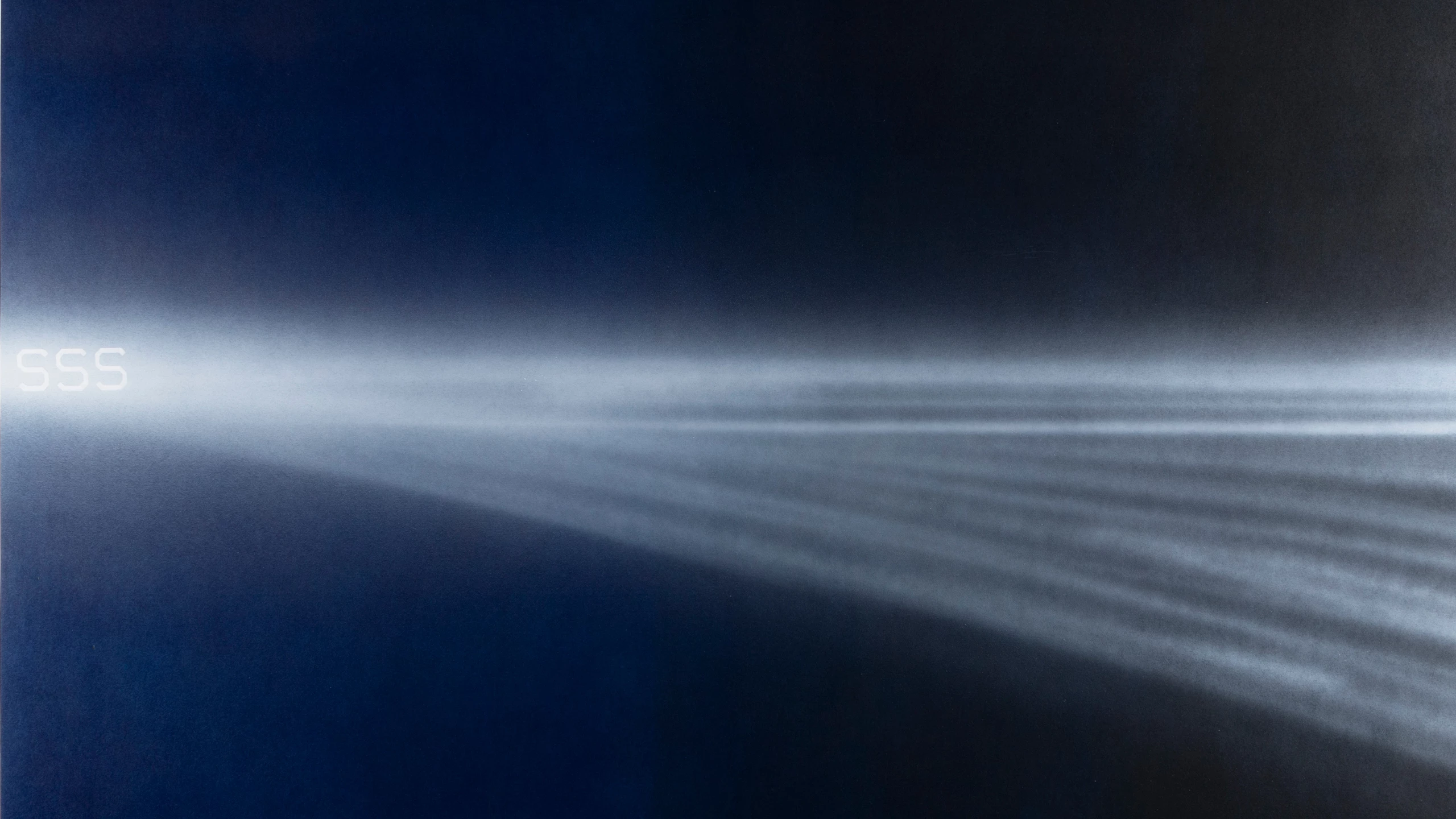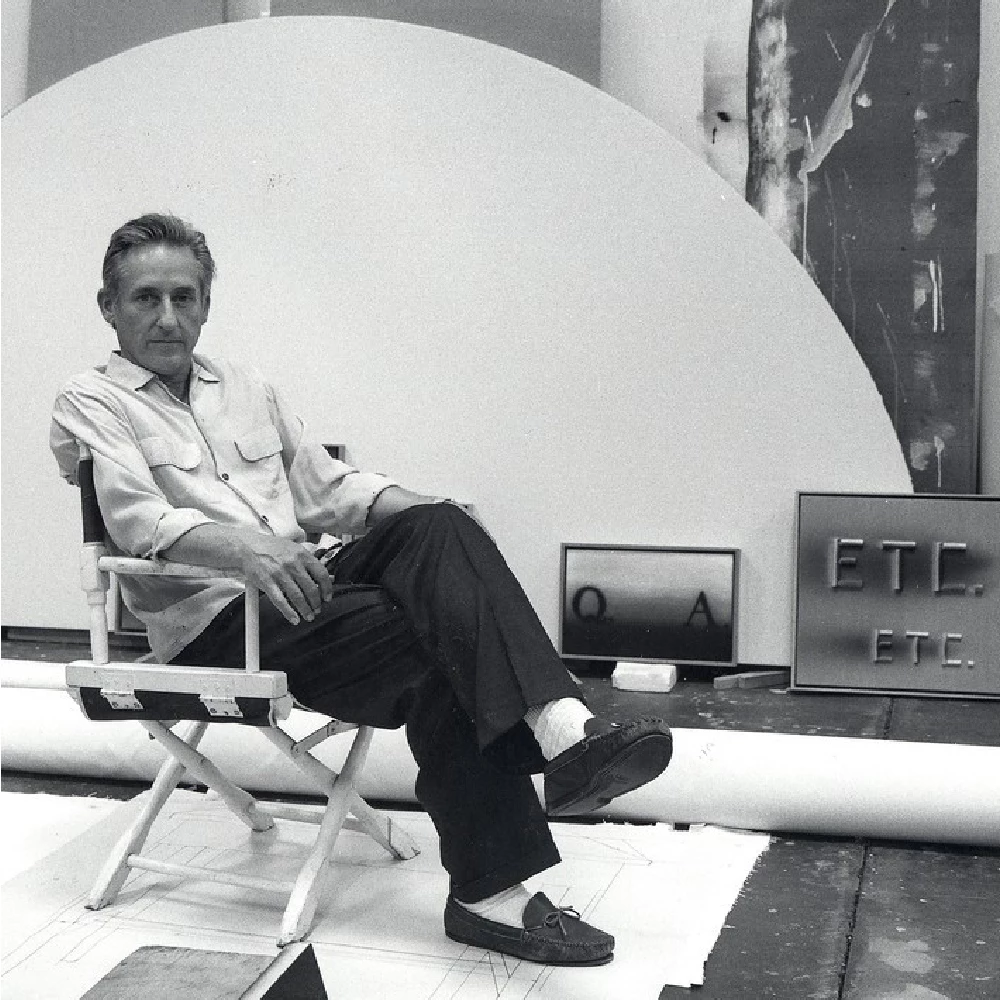Ed Ruscha's initial interest in art as a child in Oklahoma City, where his family moved in 1942, was nurtured by a neighbor who was a cartoonist. Ruscha enrolled in his first painting class with portrait painter Richard Goetz in 1948 and continued to study art in high school, simultaneously developing an interest in Dada and in the commercial printing process. Planning to study commercial art, he drove to Los Angeles the summer after graduation with a friend and occasional collaborator Mason Williams. He enrolled in the Chouinard Art Institute (later, California Institute of the Arts), where he studied from 1956 to 1960.
Ruscha worked intermittently in the commercial art while attending Chouinard, including six months at Plantin Press in 1958, learning how to run the presses and set type. In 1961, after leaving a layout job with an advertizing agency, Ruscha traveled in Europe for seven months. He worked briefly in commercial advertising after his return but soon decided to devote his full attention to fine art. One last commercial art position was with Artforum magazine, where he did layout from 1965 to 1967 using the pseudonym Eddie Russia.
Ruscha's background in commercial art, his interest in Dada, and the influence of the work of contemporaries like Jasper Johns and Robert Rauschenberg began to coalesce in his experiments with collage and montage. It was during this period that he created his first paintings in which typographical forms played a major role. His work was included in the New Paintings of Common Objects exhibition held at the Pasadena Art Museum in 1962, the same year he painted Large Trademark with Eight Spotlights, an image of the 20th-Century Fox logo and his first painting to use three-dimensionally rendered letters. Words and phrases formed from illusionistically rendered droplets of water or winding ribbons, and expressing the artist's wry wit, were to become the signature of Ruscha's art.
Ruscha's first prints were lithographs executed in 1962. He has since explored etching, aquatint, and screenprint (experimenting in the latter with organic dyes instead of printer's ink). During the 1970s he also experimented with filmmaking. And more recently, his special projects have included the large circular mural and lunette paintings in the Miami Dade Public Library, completed in 1987.

